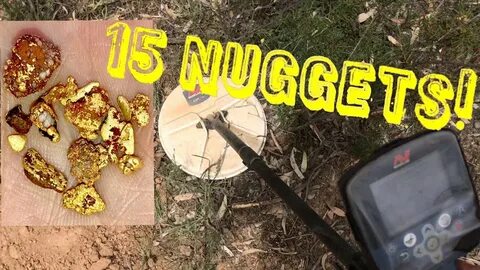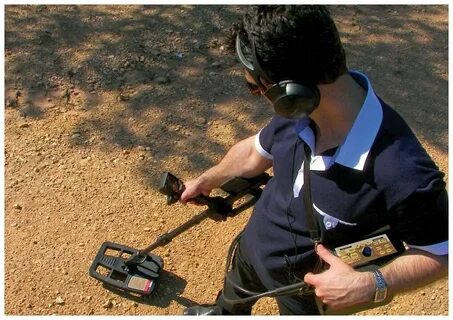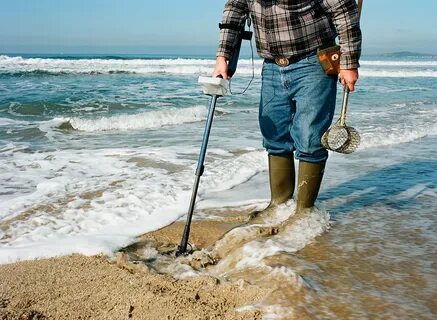Your cart is currently empty!
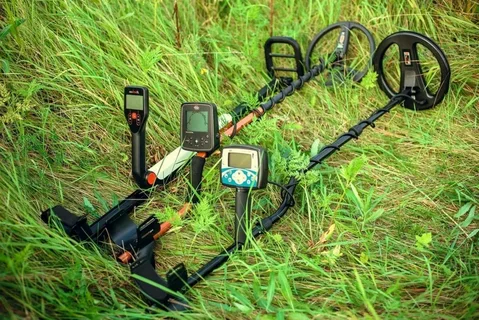
Gold prospecting tools are essential for successful mining. Whether you are a beginner or an experienced prospector, having the right equipment can make a world of difference. In this article, we will explore the essential gold prospecting tools that are crucial for successful mining. From metal detectors to gold pans, we will cover everything you need to know to increase your chances of striking gold during your prospecting adventures. So, if you’re ready to take your gold mining to the next level, keep reading to learn about the must-have tools for successful prospecting.
Essential gold prospecting tools for successful mining include a gold pan, a shovel, a classifier, a sluice box, a metal detector, and a magnifying glass. The gold pan is used to separate gold from other materials, while the shovel is used for digging and moving dirt. The classifier helps to screen out larger rocks and debris, allowing for easier panning. The sluice box is used to separate gold from other materials using water and gravity. A metal detector can help to locate gold deposits that may be hidden underground. A magnifying glass is useful for inspecting small gold particles. These tools are instrumental in successful gold prospecting and mining.
Essential Gold Prospecting Tools for Beginners
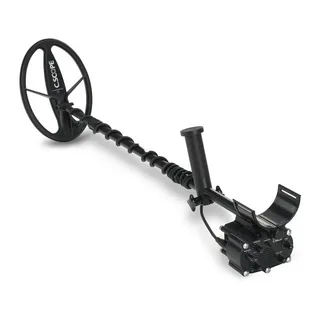
1. Gold Pan: The most basic tool for gold prospecting, a gold pan is used to swirl water and sediment to separate gold particles from other materials.
2. Sluice Box: A long, narrow box with riffles on the bottom, a sluice box is used to catch gold as water passes through it, allowing heavier particles to settle.
3. Metal Detector: Used to sweep over the ground to detect metallic materials, a metal detector can help locate gold nuggets and deposits.
4. Shovel and Pick: Essential for digging and breaking up hard ground, a shovel and pick are necessary for accessing gold deposits.
5. Classifier: A classifier is used to separate larger rocks and debris from sediment and material that may contain gold, allowing for more efficient panning.
6. Snuffer Bottle: This small, vacuum-sealed bottle is used to collect fine gold particles and flakes from the bottom of a gold pan or sluice box.
7. Magnet: A magnet can be used to separate magnetic materials such as black sand from gold, making it easier to recover the precious metal.
8. Compass and Map: Understanding the lay of the land is crucial for successful gold prospecting, and a compass and map can help beginners navigate unfamiliar terrain.
9. Gloves and Boots: Protecting your hands and feet while prospecting is important, as you may encounter sharp rocks, thorny plants, or other hazards.
10. Gold Testing Kit: For verifying the authenticity of gold finds, a testing kit can be used to determine the purity and quality of recovered gold.
Top 10 Must-Have Gold Prospecting Tools

1. Gold Pan: This is the most essential tool for gold prospecting as it is used to separate gold from other sediments. Look for a pan with deep ridges to trap and collect gold particles.
2. Sluice Box: A sluice box is used to channel running water and capture gold particles. Look for a sturdy, lightweight, and portable design for easy transport and use.
3. Gold Classifier: A classifier is used to sift through larger rocks and sediments, allowing you to separate out larger debris and focus on smaller gold particles.
4. Metal Detector: A metal detector can help you locate gold nuggets and smaller particles that may be hidden beneath the surface.
5. Magnifying Loupe: A magnifying loupe is essential for examining and identifying small gold specimens and assessing their quality.
6. Gold Snuffer Bottle: This tool is used to suction up and collect fine gold particles from your pan or sluice box.
7. Crevice Tool: A crevice tool is essential for reaching into cracks and crevices where gold can accumulate, allowing you to extract hidden particles.
8. Gold Panning Gloves: A pair of sturdy gloves will protect your hands from blisters, cuts, and cold water as you handle your prospecting tools.
9. Shovel and Digging Tools: A reliable shovel and digging tools are essential for excavation and digging in rocky and hard-packed soil.
10. GPS and Maps: GPS and maps can help you navigate and locate potential gold-bearing areas, saving time and effort in your prospecting journey.
The Ultimate Guide to Gold Prospecting Equipment
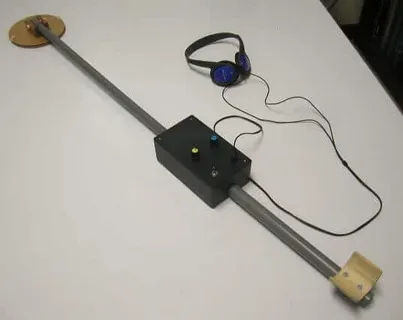
The Ultimate Guide to Gold Prospecting Equipment is a comprehensive resource that covers everything you need to know about the tools and equipment required for successful gold prospecting. This guide provides detailed information on a wide range of equipment, including metal detectors, gold pans, sluice boxes, and dredges, as well as tips for selecting the right gear for your specific prospecting needs. Whether you are a beginner or an experienced prospector, this guide will help you understand the essential equipment and techniques for finding gold.
Choosing the Right Gold Prospecting Tools for You
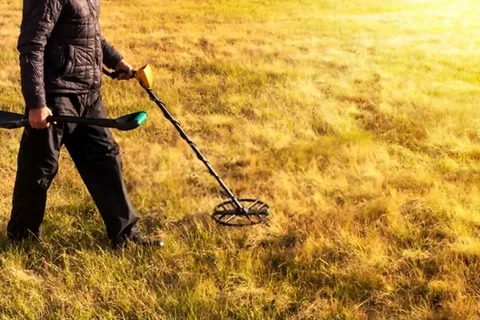
When choosing the right gold prospecting tools for you, it’s important to consider the type of terrain you will be working in, the depth at which you plan to search for gold, and your level of experience. Some common tools for gold prospecting include metal detectors, gold pans, sluice boxes, and dredges.
Metal detectors are essential for detecting gold nuggets and are useful in areas with high mineralization. Gold pans are used for panning for gold in streams and rivers, and come in different sizes and materials. Sluice boxes are long, rectangular boxes with riffles in the bottom that are used to separate gold from other materials. Dredges are powerful tools for extracting gold from river beds and can handle large volumes of material.
Ultimately, the right gold prospecting tools for you will depend on your specific needs, budget, and the type of prospecting you plan to do. It’s important to do thorough research and possibly seek advice from experienced prospectors before making any purchases.
DIY Gold Prospecting Tools You Can Make at Home
See also: nokta makro simplex
1. Gold Pan: You can easily make a gold pan at home using a shallow, wide container with ridges on the bottom. This will allow you to sift through gravel and sand to find gold particles.
2. Sluice Box: A homemade sluice box can be constructed using wood or metal with riffles to catch the gold as water passes through. This is a more advanced tool but can greatly increase your gold prospecting success.
3. Hand Dredge: A hand dredge can be made with PVC pipe and a few other materials to create a device for sucking up gold from the bottom of rivers and streams.
4. Rock Crusher: If you find larger rocks containing gold, a homemade rock crusher can be created using basic materials to crush the rocks and extract the gold.
5. Classifier: You can make a classifier using a mesh screen and a frame to sift through larger quantities of material and separate out the larger rocks and debris from the gold-bearing material.
How to Use Metal Detectors for Gold Prospecting
When using a metal detector for gold prospecting, it’s important to understand the specific settings and features of your detector. Set the discrimination to ignore iron and other unwanted metals, as gold is often found in areas with high mineralization. Ground balancing is also important to account for mineralization and soil conditions.
Once in the field, sweep the coil slowly and low to the ground, listening for any strong and consistent signals. Be sure to investigate any potential targets with a handheld pinpointer or digging tool. It’s also helpful to research and understand the geological characteristics of gold-bearing areas to increase your chances of success. Practice and patience are key when using a metal detector for gold prospecting.
The Best Gold Panning Tools for Finding Gold
The best gold panning tools for finding gold include a gold pan, a snuffer bottle, a classifier, and a shovel. Gold pans come in various sizes and shapes, but generally have riffles or ridges on the bottom to help trap the gold. A snuffer bottle is used to suck up small particles of gold and black sands. A classifier can help to separate larger rocks and debris from the smaller material that may contain gold. A sturdy shovel is essential for digging and moving large amounts of material. Additionally, a magnifying glass and a pair of tweezers can also be useful for finding and handling small gold flakes. It is important to carefully research and select the right tools based on the specific location and type of gold deposits being targeted.
Maximizing Your Gold Prospecting Tools for Success
Maximizing Your Gold Prospecting Tools for Success can involve a variety of strategies and techniques. It is important to thoroughly understand the tools at your disposal, such as metal detectors, gold pans, sluice boxes, and dredges, and how to use them effectively in different environments. Researching the geology of the area you are prospecting in and understanding the behavior of gold deposits can also significantly impact your success. Additionally, networking with fellow prospectors and learning from their experiences can provide valuable insights and tips. Regularly maintaining and cleaning your equipment is crucial for maximizing its performance and longevity. Lastly, being patient, persistent, and open to trying new methods can greatly increase your chances of success in gold prospecting.
Gold Prospecting Tools: Traditional vs. Modern Techniques
Traditional gold prospecting tools include pans, sluice boxes, and rockers. Panning involves swirling a mixture of water and sediment to separate gold particles from other materials. Sluice boxes are long, narrow devices that use riffles to trap gold as water flows through. Rockers are boxes set at an angle with a screen at the bottom to catch gold as water washes over it.
Modern gold prospecting techniques include metal detectors and dredges. Metal detectors are used to locate gold nuggets and deposits buried underground. Dredges are large machines that can suction materials from the bottom of rivers and streams, allowing for more efficient collection of gold-bearing sediment.
Each type of tool has its own advantages and limitations, and many modern prospectors use a combination of traditional and modern techniques to maximize their chances of finding gold.
Tips for Maintaining and Caring for Your Gold Prospecting Tools
– Properly clean and dry your gold prospecting tools after each use to prevent corrosion and rust.
– Store your tools in a dry, cool place to prevent damage from moisture and extreme temperatures.
– Regularly inspect your tools for signs of wear and tear, and promptly replace any worn out parts.
– Use the right technique and tools for each task to avoid unnecessary strain on your equipment.
– Keep your tools properly lubricated to ensure smooth operation and prevent friction-induced damage.

